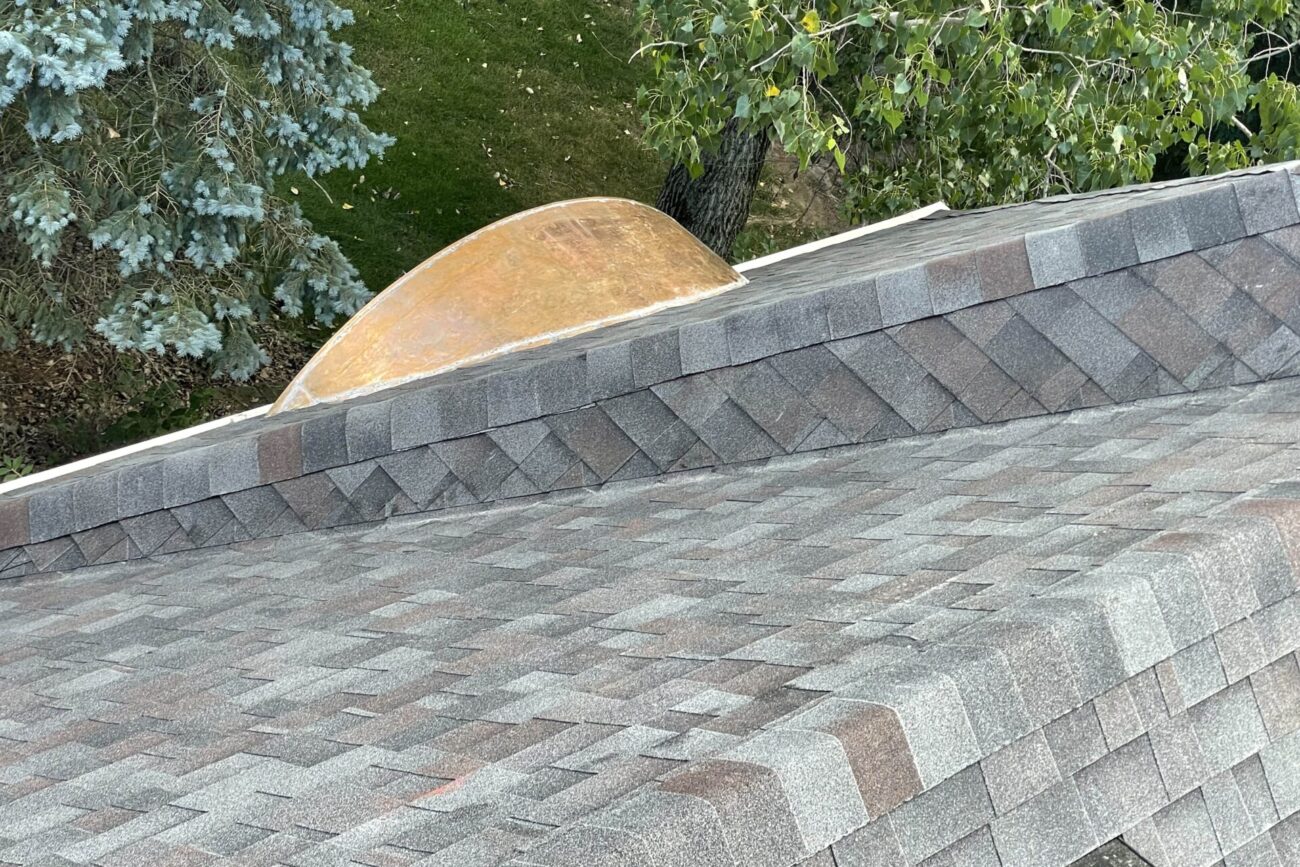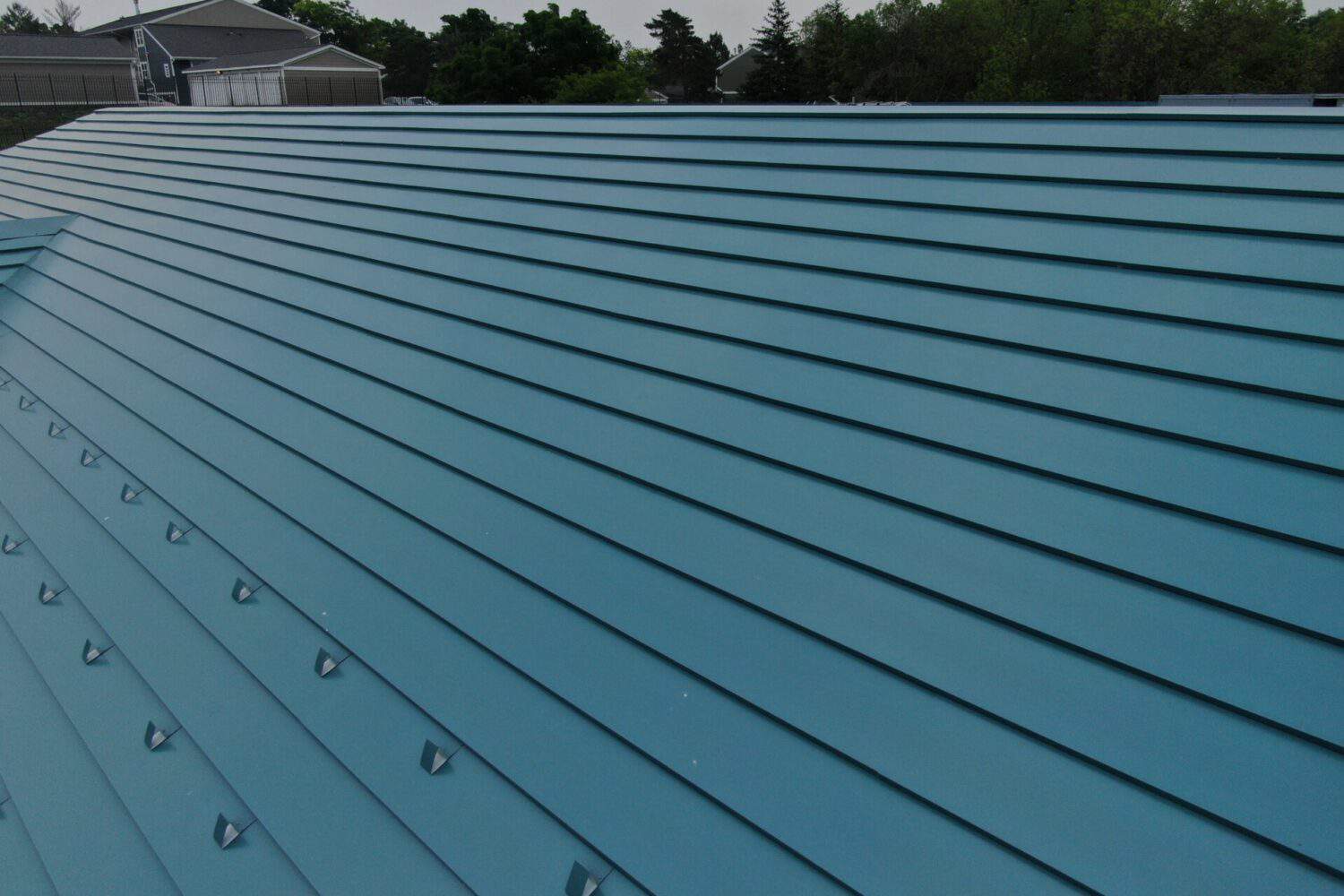Your roof supports the structural integrity of your home, protects its interior, and adds to its aesthetics. All totaling up to how important it is to maintain it. This is especially true in Minnesota where extreme temperatures and severe weather can put your roof to the test. Roof maintenance does come with a price tag though. A roof overlay can be a cost-effective way to maintain your roof before investing in a roof replacement, but the decision to go ahead with an overlay comes with limitations. The roof overlay cost versus the cost of replacement is only one factor in this decision. Let’s help you determine if a roof overlay is your best option.
What is a Roof Overlay?
In some situations, a roof overlay is an alternative to a full roof replacement. It consists of putting a second set of new shingles over your old shingles. This overlay roof covering is used to refresh your roof by adding a new roof layer over your existing roof instead of removing the existing roof and replacing it completely. It can be an option that can save you time and money under certain circumstances, but there are some factors to consider before going ahead.
One thing to know up front about a roof overlay is that you can only overlay shingles on your existing roof if it is made of asphalt shingles. You cannot overlay roof shingles on top of slate, wooden shakes, or any other roof covering. If your roof is made of anything but asphalt shingles, a roof overlay is not an option that you can consider.
A New Roof Vs Overlay
When deciding the best way to maintain your roof the difference between roof overlay and roof replacement can often come down to cost. Since a roof overlay does not include the removal of your old roof, it generally comes with a lower initial cost than a roof replacement.
A full roof replacement includes removing the old roof, which takes more time and in turn, has higher labor costs. There are also costs associated with disposing of the old materials. During a replacement, roofers also prepare the roof decking, install new vents and roof flashing before installing the new shingles. This process repairs any damage to your roof underlayment and can catch any leaks or other problems that can make your roof sub-standard in doing the job its meant to do. Overall, a roof replacement is a much longer process than overlap roofing.
Redecking a roof is not a part of a roof overlay, so if there is damage to the roof decking, it does not get resolved as it would with a roof replacement. If your roof is damaged, it will require a complete roof replacement.
Your old existing roof remains with a roof overlay. It can cover damaged or crumbling shingles and improve the overall appearance of your roof, but it does not fix structural problems or issues with the underlayment.
When comparing the roof overlay cost with the cost of a roof replacement, you may save time and money initially, but since your roof will need to eventually be replaced, overall savings may be nominal over time.
This is especially true if there is roof damage that is not discovered with a roof overlay since removal is not a part of the process. You are not going to save money in the long term by laying new shingles over a damaged roof. It will eventually need to be addressed and may even make the problem worse, which could cost more in the long run. You also want to factor in the lifespan of a roof overlay as being less than that of a roof replacement.
Before going ahead with a roof overlay, make sure you have a thorough roof inspection by a professional roofing contractor.
 Pros and Cons of Roof Overlay
Pros and Cons of Roof Overlay
A roof overlay is not usually a recommended choice by professional roofers, but in some situations, it can have certain advantages. First, let’s look at the pros.
Less Cost
Roof overlay cost is a huge advantage when compared to a roof replacement. It’s generally the cheaper option, especially in the short term, because substantially less labor adds up to less on your pocket book.
Less Time
With no tear-off the construction time for a roof overlay is considerably shorter than a replacement. You can get a new roof in less time with an overlay option.
Less Mess
Tear-off is messy work. Old shingles create a lot of debris and dust with materials scattered around the outside of your home, which need to be disposed of. Sometimes Professional, reputable roofing companies, like Summit Construction, take care of this mess but the interim can be a hassle. With a roof overlay, however, the only mess is from cutting and fitting the new shingles.
Now, for the cons.
Added Weight
A second roof layer will make your roof heavier, which can be a problem in maintaining the integrity of your roof. This can lead to damage, especially in a climate like Minnesota where heavy snow for a good chunk of the year is not only likely but quite normal. Adding snow to two layers of a roof could prove to be too heavy for your roof and lead to structural damage or even collapse.
Uneven Roof
Overlaying new shingles on top of old ones can cause your roof to become uneven. If the old shingles are curled or the wood decking has soft spots, it can create dips between the building trusses. This may cause the second shingle layer to look uneven. This can be aesthetically unpleasing, but can also cause problems with your roof’s integrity down the line.
Unaddressed Underlayment Problems
Shingles are not the only thing that make up your roof. Your underlayment is important as well. An inspection can reveal the condition of what is underneath your existing shingles. If there is damage, adding another layer does not solve it. It only covers it up, which can cause more problems later, especially with added weight.
Difficult Maintenance
It is more difficult to maintain two layers of roofing as opposed to one. If your roof does get a leak, it becomes more difficult to track the problem. Two layers makes it more complex to pinpoint and repair.
Lower Resale Value
A roof overlay often decreases your home’s resale value. With two layers of shingles on a home, inspectors can make the buyer aware that they will have extra labor costs the next time the roof is replaced.
What Contributes to the Roof Overlay Cost
Overall, your roof overlay cost is figured by the size, type, slope, design and condition of your roof as well as the quality of materials used. The region of the country is often a factor too and whether roof repairs are a necessary part of the job. A roof overlay is generally a more affordable option because with no tear-off involved, it takes less time and labor with no dump fees involved. Your out-of-pocket expenses can vary if your homeowners insurance is covering some or all of the work as well. Your roof is important though and whether an overlay or a replacement, it is important for the work to be done by a professional. You want to pay to get it done right.
Roof Overlay Cost in Minnesota
A Minnesota roof overlay is only allowed under certain sections of the Minnesota Residential Code and require the prior approval of a building inspector. Re-roofing projects in Minnesota require building permits and building permit fees are established by each municipality. So, the location of your home will determine the permit fees and costs associated with a roof overlay in Minnesota. Your local department of building safety can give you more information about permit costs and required inspections.
Roof Overlay Cost Vs Durability
The cost of maintaining your roof needs to take both the initial cost and how long the work you pay for will last. A roof overlay may cost less but it does not compare to the strength and durability of a full replacement. So, how long does roof overlay last? If done over an existing roof that is in fairly good shape, a roof overlay can last about 15 years. Depending on the materials you use, however, a new roof replacement can last between 20 to 50 years. This is a factor to consider when looking at the roof overlay cost.
How to Know When to Choose a Roof Overlay
A roof overlay is not recommended in every situation. There are circumstances where a full roof replacement is highly recommended. Hiring a professional, licensed contractor to do an in-depth inspection of your roof is crucial before making any roofing decision. A professional roofer will find faults in your roof that are not always visible to an untrained eye. Without a proper roof inspection, it is impossible to make the right decision for your home. Some factors to consider are your roof shape, the condition of your shingles, and whether your roof is damaged.
Roof Shape
A flat roof overlay can be an option for a flat or low slope roof. This type of roof is more popular on residential homes in less severe climates. Flat roofs are less common in areas with more severe weather, such as Minnesota, where heavy snow does not as easily pile up on a higher pitched roof.
Condition of Shingles
It is a much better option to overlay shingles on a flat, even surface. If your existing shingles are uneven or curling, a roof overlay may not be the best option. It is best to discover the reasons for uneven or curling shingles before deciding to add a second layer on top of them.
Damaged Roof
If your roof has serious problems with damage, leaks or sagging, then it is best to address those issues with a roof replacement, not with a roof overlay. Cost of a roof replacement in those circumstances will be far worth it in the long run.
Roof Overlay Cost: Final Thoughts
Under the right circumstances, a roof overlay can prolong the lifespan of your current roof. When deciding the best options for giving your roof a refresher though, weighing the roof overlay cost versus the cost of a roof replacement is not your only consideration. It is true that a roof overlay can be a cost-effective way to maintain your roof in the short-term, but you will have to eventually invest in a roof replacement. If your roof is nearing the end of its life cycle but is still in good condition, an overlay may hold off a full roof replacement a while longer. To improve the look and function of your roof though, you will need a full replacement at some point, even if you invest in an overlay.
In the end, determining between a roof overlay or a tear-off and replacement, needs to be done with the help of a professional who can give you a comprehensive roof inspection. Every roof has special considerations. The most important thing before making any roofing decisions is to consult with a professional roof contractor, like Summit Construction.

